
A rather small but very svelte bird sporting an incandescent yellow chest.
Meet the Dusky-capped Flycatcher:
 “Dusky-capped Flycatcher (49558765637)” by Charlie Jackson is licensed under CC BY 2.0.
“Dusky-capped Flycatcher (49558765637)” by Charlie Jackson is licensed under CC BY 2.0.
The dusky-capped flycatcher (Myiarchus tuberculifer) is a passerine bird in the tyrant flycatcher family. In appearance, Dusky-capped are rather svelte, with a lemon-colored belly, grayish breast, and brown upperparts. The tail and wings often show some limited reddish or cinnamon color (depending on region), with yellowish secondaries and whiter tertials. The bill is slender and dark (sometimes with a flesh-colored base to the lower mandible).
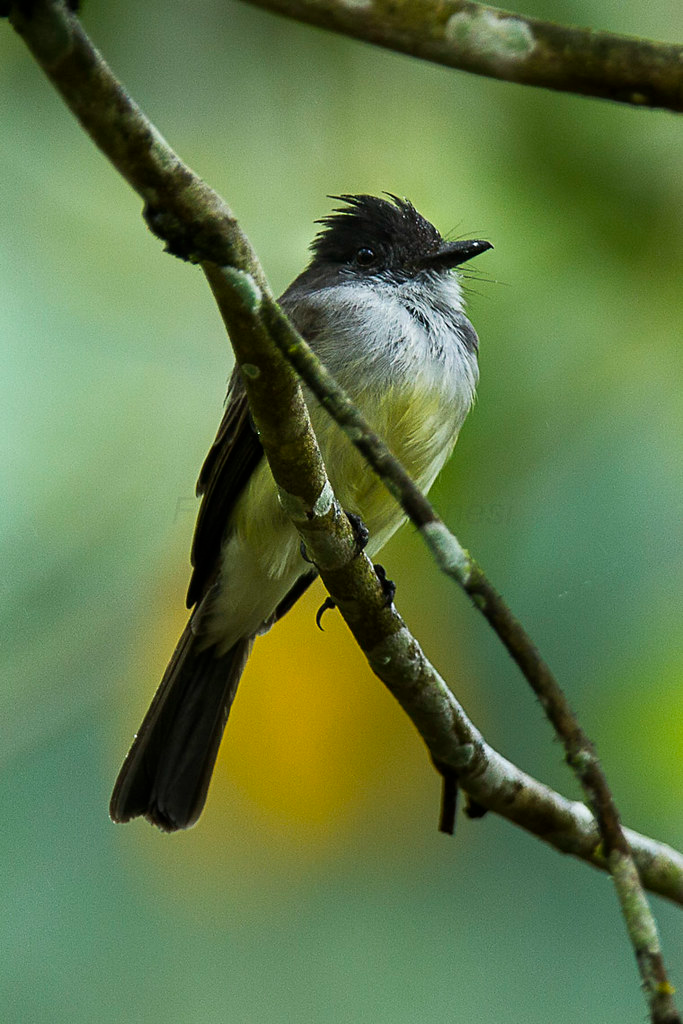 “Dusky-capped Flycatcher – South Ecuador_S4E8869” by fveronesi1 is licensed under CC BY-SA 2.0.
“Dusky-capped Flycatcher – South Ecuador_S4E8869” by fveronesi1 is licensed under CC BY-SA 2.0.
Both males and females look very similar.
However, juvenile birds have rufous edgings to the wings and tail.
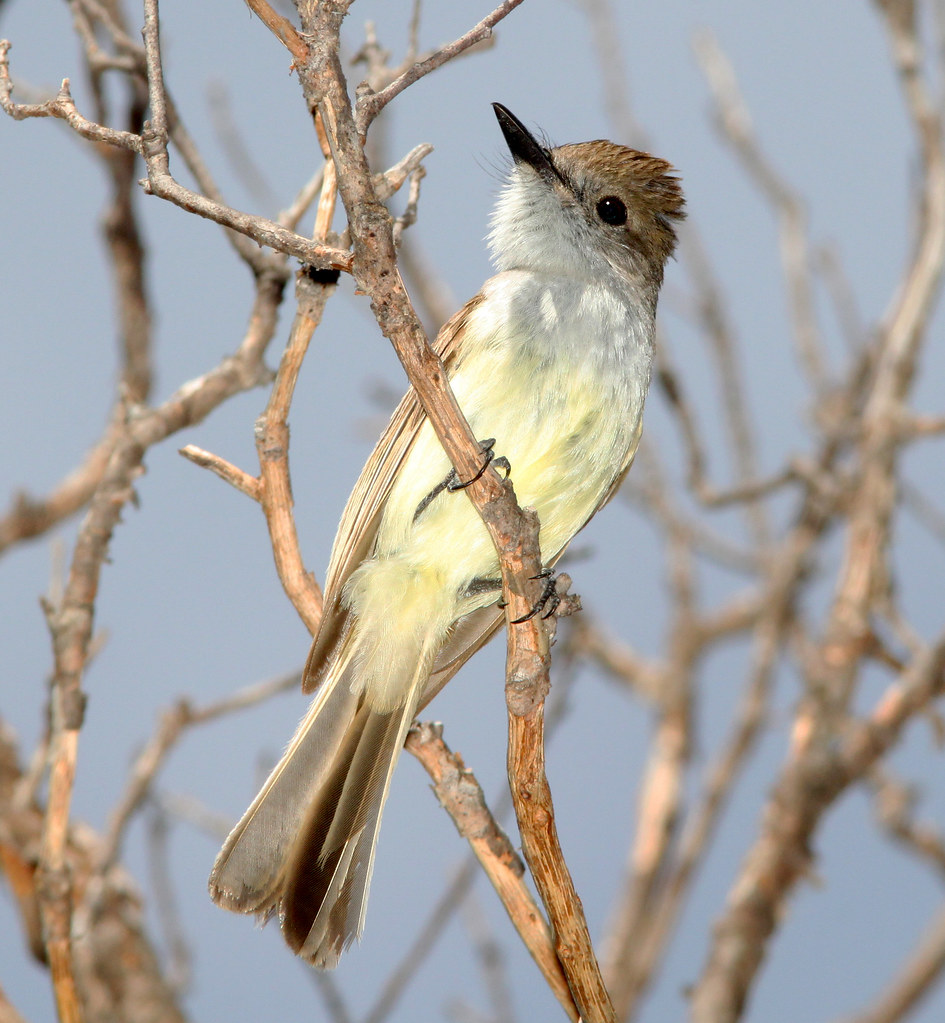 “590 – DUSKY-CAPPED FLYCATCHER (7-30-12) upper humboldt cyn, patagonia mts, scc, az” by Sloalan is marked with CC0 1.0.
“590 – DUSKY-CAPPED FLYCATCHER (7-30-12) upper humboldt cyn, patagonia mts, scc, az” by Sloalan is marked with CC0 1.0.
These birds have a widespread presence across Central and South America, thriving in diverse habitats. Within the United States, their distribution is mostly confined to the “Sky Islands” of Southern Arizona, New Mexico, and West Texas, where they breed.
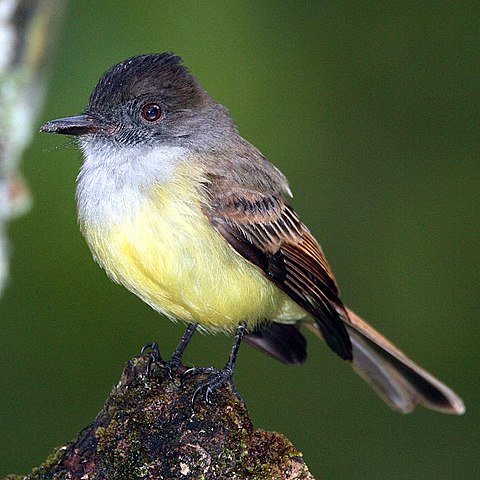 Photo courtesy of Mdf/CC BY-SA 3.0
Photo courtesy of Mdf/CC BY-SA 3.0
They particularly favor mixed Pine-Oak forests and riparian areas. The breeding population in Texas is mainly concentrated in the Davis Mountains, with a smaller number of pairs found in the Chisos Mountains.
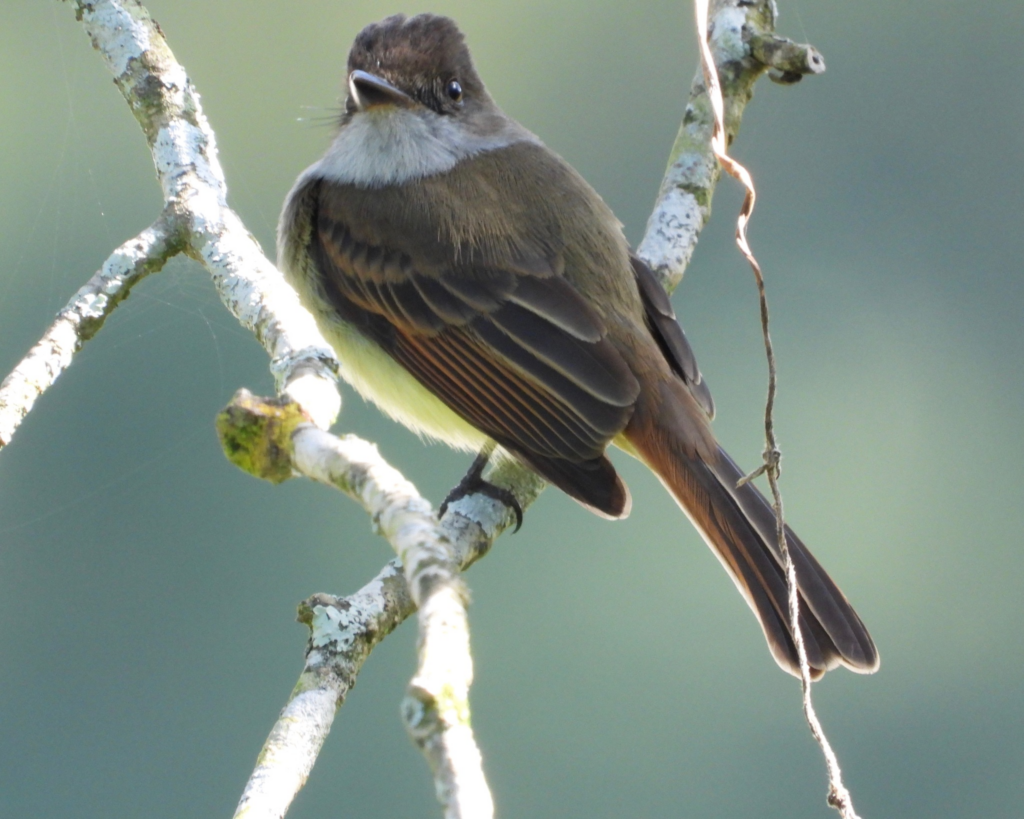 “dusky-capped flycatcher, papamoscas triste” by Grete Pasch is licensed under CC BY 4.0.
“dusky-capped flycatcher, papamoscas triste” by Grete Pasch is licensed under CC BY 4.0.
They particularly favor mixed Pine-Oak forests and riparian areas. The breeding population in Texas is mainly concentrated in the Davis Mountains, with a smaller number of pairs found in the Chisos Mountains.
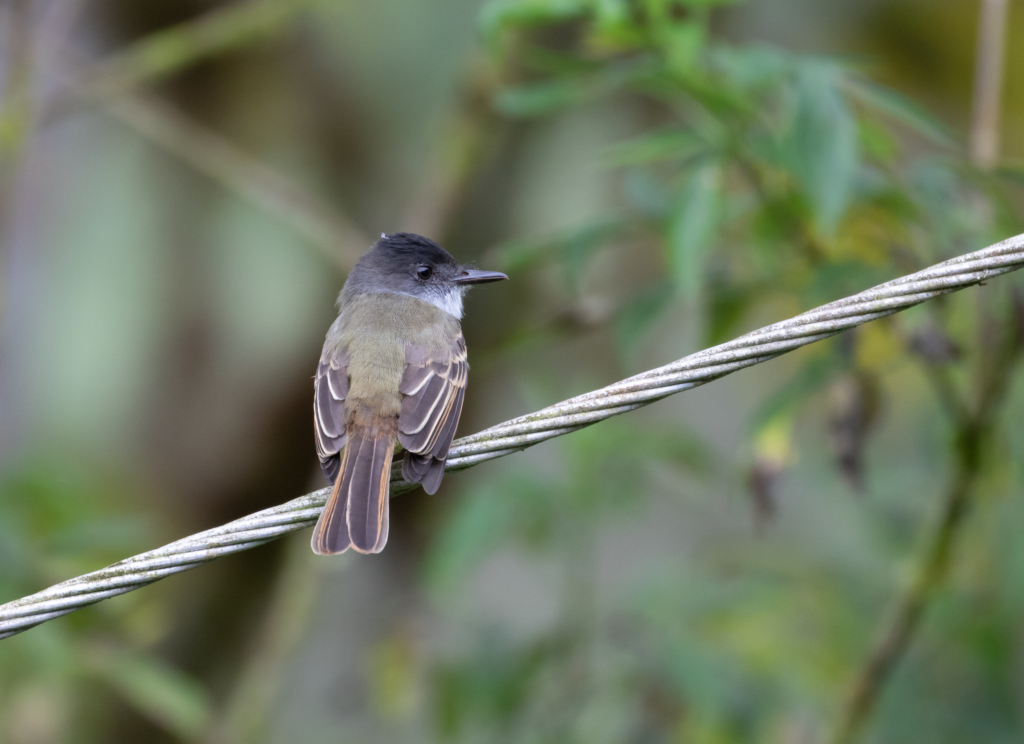 “dusky-capped flycatcher, papamoscas triste” by Cullen Hanks is licensed under CC BY 4.0.
“dusky-capped flycatcher, papamoscas triste” by Cullen Hanks is licensed under CC BY 4.0.
This species predominantly feeds on insects, employing flycatching techniques among the mid-level branches of trees. On occasion, it also includes fruits in its diet, particularly those from gumbo-limbo (Bursera simaruba) and, to a lesser extent, from Cymbopetalum mayanum (Annonaceae), especially during the winter months.
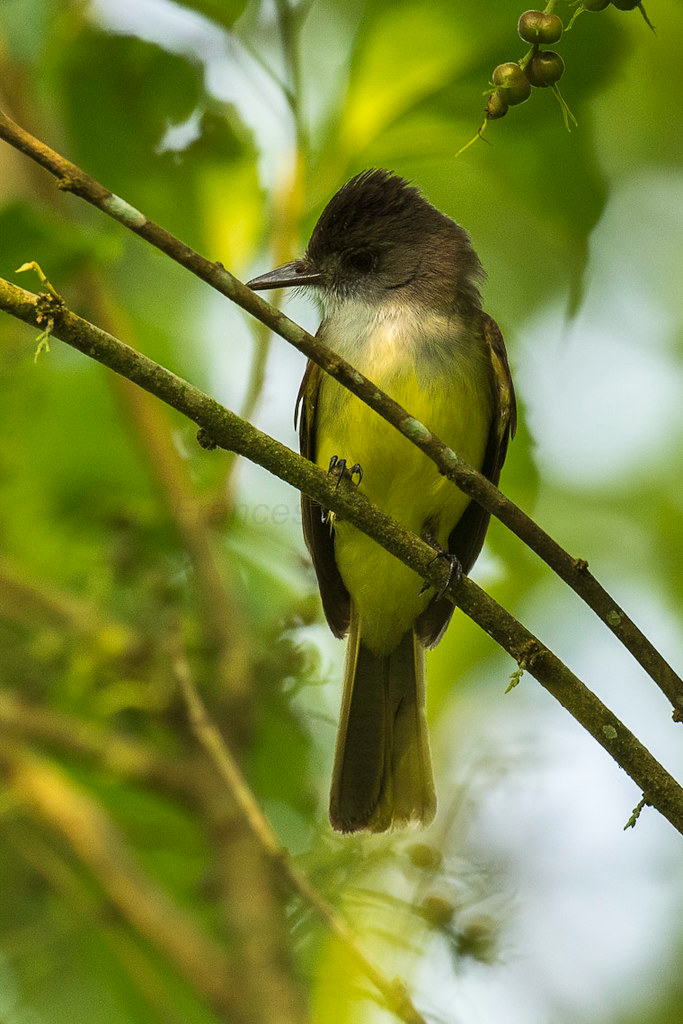 “Dusky-capped Flycatcher – Sarapiqui – Costa Rica_MG_0244” by fveronesi1 is licensed under CC BY-SA 2.0.
“Dusky-capped Flycatcher – Sarapiqui – Costa Rica_MG_0244” by fveronesi1 is licensed under CC BY-SA 2.0.
Nesting occurs within tree cavities, where the bird constructs its nest. The typical clutch comprises three eggs with brown markings on a buff background. The young birds leave the nest approximately 13 days after hatching.
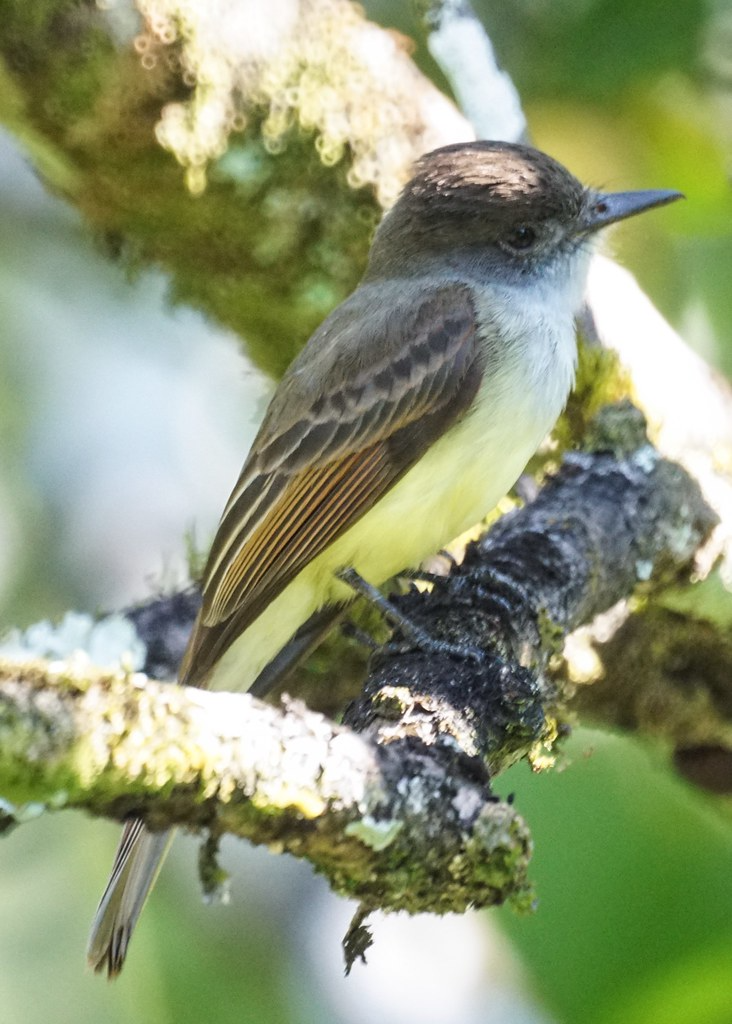 “Dusky-capped Flycatcher” by Mike’s Birds is licensed under CC BY-SA 2.0.
“Dusky-capped Flycatcher” by Mike’s Birds is licensed under CC BY-SA 2.0.
This bird is regarded as of Least Concern on the IUCN Red List!
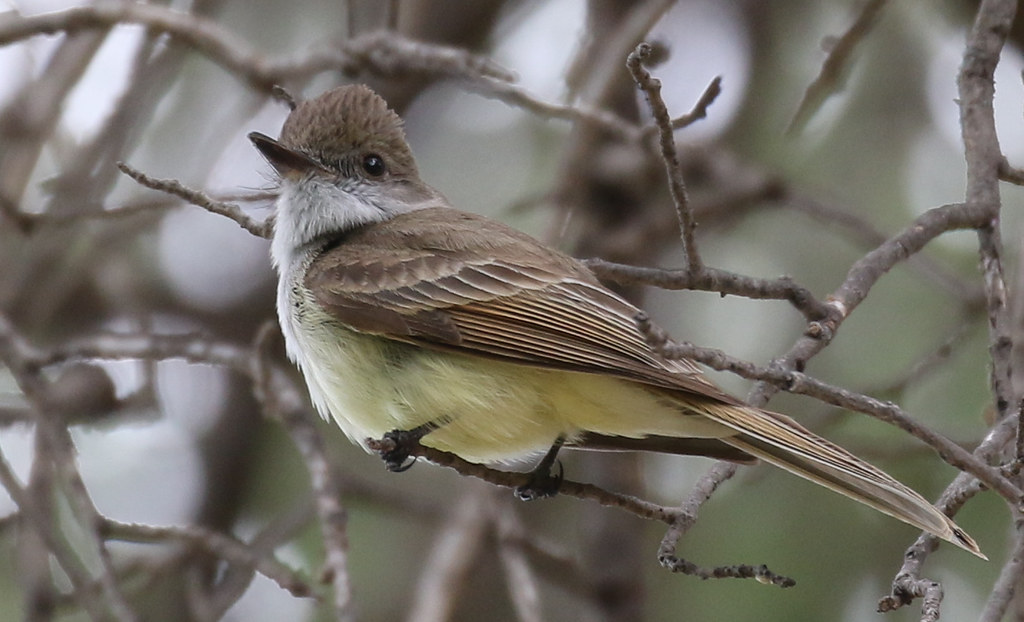 “Dusky-capped Flycatcher” by IsaacCSanchez is licensed under CC BY 2.0.
“Dusky-capped Flycatcher” by IsaacCSanchez is licensed under CC BY 2.0.
Listen to this bird:
This article uses material from Wikipedia.org which is licensed under the GNU Free Documentation License via Copyright Wikipedia. Images on this page are the sole property of the photographers (unless marked as Public Domain). Please read the license and or contact the photographers directly before using them for any purpose. Thank you all.
So, Bright, He’s Almost Incandescent This Stunning Nomadic Bird Follows The Rain Wherever It May Go!
Please SHARE this article with all your bird-loving friends and family.

